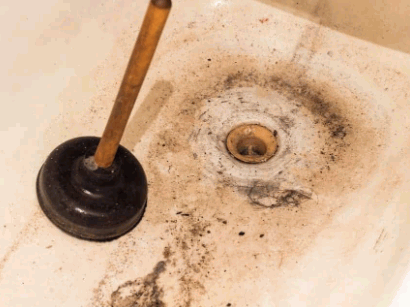The article author is making a few good annotation on Tips on How to Effectively Use a Plunger as a whole in the content down the page.

Intro
Proper upkeep of house drains pipes is vital for protecting against clogs and making certain smooth water flow. One of the trick devices in every homeowner's toolkit is the plunger, together with numerous drainpipe cleaners developed to deal with persistent obstructions effectively. This article checks out exactly how to utilize plungers and drain cleaners efficiently to keep your drains flowing freely.
Section 1: Understanding Bettors
Sorts of Plungers
There are numerous kinds of plungers available, each made for various kinds of drains and obstructs. One of the most common types include cup plungers, flange bettors, and accordion bettors.
Just How Plungers Work
Plungers deal with the principle of creating stress and suction to remove blockages. When correctly applied over a drainpipe, they produce a vacuum that can take out particles or separate clogs.
Selecting the Right Bettor
Selecting the ideal bettor relies on the type of drainpipe and the nature of the clog. Mug plungers are perfect for sinks and bathtubs, while flange bettors are better matched for toilets due to their style.
Typical Blunders with Bettors
Staying clear of these mistakes guarantees efficient plunging: inappropriate seal around the drainpipe, not enough pressure, and unclear bordering debris.
Section 2: Utilizing Plungers Efficiently
Preparation
Before diving, make certain the bettor covers the drain completely and forms a limited seal. Clear any type of visible debris around the drainpipe opening.
Method
Begin with gentle diving activities to develop suction. Increase stress slowly, using a constant rhythm. Repeat as needed until the drainpipe clears.
Repairing Tips
If plunging does not work, attempt adjusting the seal, using oil jelly for a much better seal, or making use of a different kind of bettor.
Area 3: Comprehending Drain Cleansers
Sorts Of Drainpipe Cleansers
Drain pipes cleaners can be chemical or chemical. Chemical cleaners utilize strong chemicals to dissolve clogs, while chemical cleansers make use of natural enzymes to break down organic matter.
Exactly How Drain Cleaners Work
Chemical cleaners react with clogs to dissolve them, while enzymatic cleaners break down organic materials like hair and grease without harming pipelines.
Safety and security Factors to consider
Constantly put on handwear covers and eye security when utilizing chemical drain cleaners. Guarantee sufficient ventilation and follow supplier directions very carefully.
Eco-Friendly Alternatives
Think about using vinegar and cooking soda or enzyme-based cleaners for eco-friendly alternatives that are much safer for pipelines and the atmosphere.
Area 4: Utilizing Drainpipe Cleaning Company Properly
Application Strategies
Put chemical cleansers directly into the drainpipe opening. Permit them to help the suggested time before purging with warm water. Enzymatic cleansers must sit overnight.
Preventative measures
Prevent blending different sorts of cleaners, as this can create hazardous fumes. Never make use of chemical cleansers along with a plunger, as splashing can take place.
Handling Persistent Blockages
For consistent clogs, think about using a pipes snake or calling an expert plumbing technician to prevent damages to pipelines.
Final thought
Finally, understanding exactly how to make use of plungers and drainpipe cleansers efficiently is crucial for maintaining healthy plumbing systems. By picking the right tools and techniques, house owners can take on small clogs and prevent major plumbing problems down the line.
How to Use a Plunger to Unclog a Drain
The humble plunger is a simple yet effective tool for breaking clogs in sinks, tubs and toilets. This handy tool is easy to use. You can make the most of its power if you understand how it works. Ready to dive in? Here’s what you need to know.
Safety First!
Never use a plunger with drain chemicals. Water will splash as you work, and the chemicals can spatter, burning skin and eyes. It’s a good idea to use rubber gloves and wear safety goggles when you work on a clog.
Choose the Right Tool for the Job
Plungers come in two different styles. Sinks, bathtubs and showers require a cup plunger. Like its name suggests, the rubber end is shaped like a cup. Use a flange plunger on toilets. These plungers have a rubber funnel extending from the cup. A plunger needs to be big enough to cover the drain.
Ready, Set, Plunge!
Coat the rim: Coat the plunger rim with petroleum jelly. This helps make a better seal.
Block outlets: Hold a wet rag over nearby outlets such as the overflow vent or the drain in a second sink.
Release air: Insert the plunger at an angle into the water. Water will displace air in the cup. A water-filled cup is more forceful than one filled with air.
Keep the plunger upright: Hold the plunger perpendicular to the drain. Use fast, forceful strokes, but make the first stroke gentle. The first stroke can create a splash if the cup still contains air. Thrust the plunger 15 to 20 times.
Snap off the plunger: The final stroke should be a strong upward motion that ends when the plunger snaps off the drain.
Repeat the process: you may need to repeat this sequence several times. When the water drains away, your work is done. High-five! https://plumbernw.com/blog/how-to-use-a-plunger-to-unclog-a-drain/

Application Strategies
Put chemical cleansers directly into the drainpipe opening. Permit them to help the suggested time before purging with warm water. Enzymatic cleansers must sit overnight.
Preventative measures
Prevent blending different sorts of cleaners, as this can create hazardous fumes. Never make use of chemical cleansers along with a plunger, as splashing can take place.
Handling Persistent Blockages
For consistent clogs, think about using a pipes snake or calling an expert plumbing technician to prevent damages to pipelines.
Final thought
Finally, understanding exactly how to make use of plungers and drainpipe cleansers efficiently is crucial for maintaining healthy plumbing systems. By picking the right tools and techniques, house owners can take on small clogs and prevent major plumbing problems down the line.
How to Use a Plunger to Unclog a Drain
The humble plunger is a simple yet effective tool for breaking clogs in sinks, tubs and toilets. This handy tool is easy to use. You can make the most of its power if you understand how it works. Ready to dive in? Here’s what you need to know.
Safety First!
Never use a plunger with drain chemicals. Water will splash as you work, and the chemicals can spatter, burning skin and eyes. It’s a good idea to use rubber gloves and wear safety goggles when you work on a clog.
Choose the Right Tool for the Job
Plungers come in two different styles. Sinks, bathtubs and showers require a cup plunger. Like its name suggests, the rubber end is shaped like a cup. Use a flange plunger on toilets. These plungers have a rubber funnel extending from the cup. A plunger needs to be big enough to cover the drain.
Ready, Set, Plunge!
Coat the rim: Coat the plunger rim with petroleum jelly. This helps make a better seal. Block outlets: Hold a wet rag over nearby outlets such as the overflow vent or the drain in a second sink. Release air: Insert the plunger at an angle into the water. Water will displace air in the cup. A water-filled cup is more forceful than one filled with air. Keep the plunger upright: Hold the plunger perpendicular to the drain. Use fast, forceful strokes, but make the first stroke gentle. The first stroke can create a splash if the cup still contains air. Thrust the plunger 15 to 20 times. Snap off the plunger: The final stroke should be a strong upward motion that ends when the plunger snaps off the drain. Repeat the process: you may need to repeat this sequence several times. When the water drains away, your work is done. High-five! https://plumbernw.com/blog/how-to-use-a-plunger-to-unclog-a-drain/

Do you really like reading up on Here's How to Correctly Use a Toilet Plunger? Make feedback directly below. We'd be glad to hear your opinion about this posting. In hopes that you visit us again soon. Loved our posting? Please quickly share it. Help somebody else find it. Thank you so much for taking the time to read it.
Further Details